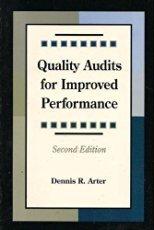Question
Facts Charlene and her boyfriend, Charlie jointly own several acres of land that is adjacent to their home, of which they also own jointly. Charlie
Facts
Charlene and her boyfriend, Charlie jointly own several acres of land that is adjacent to their home, of which they also own jointly. Charlie owns a sporting goods store and operates it as a sole proprietor. Charlene is currently employed as a computer technician for the local hospital but desires to follow her dreams and open her own business providing horseback riding lessons, boarding for horses and hosting horse shows. She plans on operating the business herself with limited or no employees. Charlie does not want to participate in the management of the business. When Charlene seeks your advice, she has already begun construction of the stables and the fencing for the corrals.
Instructions
Compose a clear, detailed and well-organized 1 to 2 page (typed, single spaced, properly formatted, 12 font) client letter advising Charlene which two entity types best suit her current and future needs and you will compare and contrast the two entity types. The types of entities you should consider are sole proprietorship, limited partnership, limited liability company- single member, limited liability company-multiple members, general partnership, C Corporation, and S Corporation. Select the top two choices for the client.
Discuss both the tax and nontax (i.e. legal, insurance, title of property etc.) factors relevant to your recommendation and her case, tailored to her specific business needs and risks. In your letter compare the (1) creation/organization implications, (2) operational features (how operating income is taxed, employee status of owners, self-employment tax and 3) how nonliquidating distributions are treated by the entity and by the owner(s) of the type you recommend to the second-best choice and explain why your recommendation is the better choice. You do not need to cite any work, code sections or other tax sources.
Tailor your advice and reasoning to the client's needs (dont give generic advice) and use language that your client will understand. Be thorough using your own words (do not copy from the text or other sources). Type your answer using proper grammar, spelling, sentence structure and punctuation.
Step by Step Solution
There are 3 Steps involved in it
Step: 1

Get Instant Access to Expert-Tailored Solutions
See step-by-step solutions with expert insights and AI powered tools for academic success
Step: 2

Step: 3

Ace Your Homework with AI
Get the answers you need in no time with our AI-driven, step-by-step assistance
Get Started


